Vision therapy: 10 more tools for your practice
In the Vision Therapy & Rehabilitation Service at Southern College of Optometry, there is no one way to perform vision therapy; this list and the previous are reflective of that point.
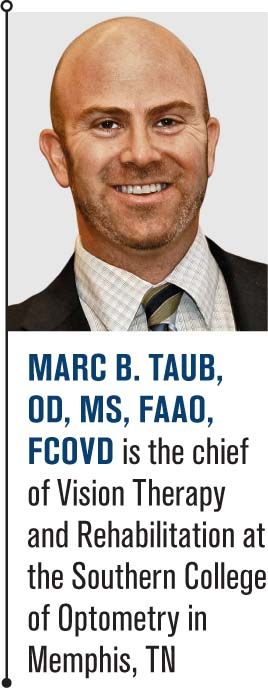
Because the response to my first top 10 activities for vision therapy was positive (“Vision therapy: A top 10 must-have list,” August 2014), I have decided to once again revisit the topic. On the first list were some of the mainstays in the vision therapy room as well as a bonus item. In this installment, I will present a second set of 10 items that are essential to every vision therapy practice and expound in greater detail on one or two items from the first list.
In the Vision Therapy & Rehabilitation Service at Southern College of Optometry, there is no one way to perform vision therapy; this list and the previous are reflective of that point. Some doctors prefer computer programs and technical instruments, while others perform activities in free space. I like a bit of both, as you can tell. Regardless of which approach you may take, you are not wrong.
Related: Vision therapy: A top 10 must-have list
1. MFBF Matching Game
While this specific version of this activity is new on the market, the concept is not a new one. This activity uses the concept of monocular fixation in a binocular field, or bi-ocular, as some refer to it. This means that both eyes consensually react to the stimulus, but only one eye at a time actually sees the given stimulus. This is an intermediate step in accommodative techniques between monocular and binocular therapies.
In this set, there are clear acetates with black targets (pictures, numbers, and three grade levels of words), a red acetate that sits under the chosen acetate, and corresponding sets of white domino style tiles with red targets (see Figure 1). While previous iterations required a specific viewer on which to perform the activity, this one can be used with a standard lighted vectogram holder. While wearing red/green glasses, the patient locates and places the matching tiles on top of the red/clear acetate in the correct location (see Figure 2). If she cannot see either target or during the activity the targets start to disappear, the patient is suppressing and a larger target should be used. This activity can be made more challenging with the addition of plus and minus lens on opposite eyes to turn up the burner on relaxing and stimulating accommodation.
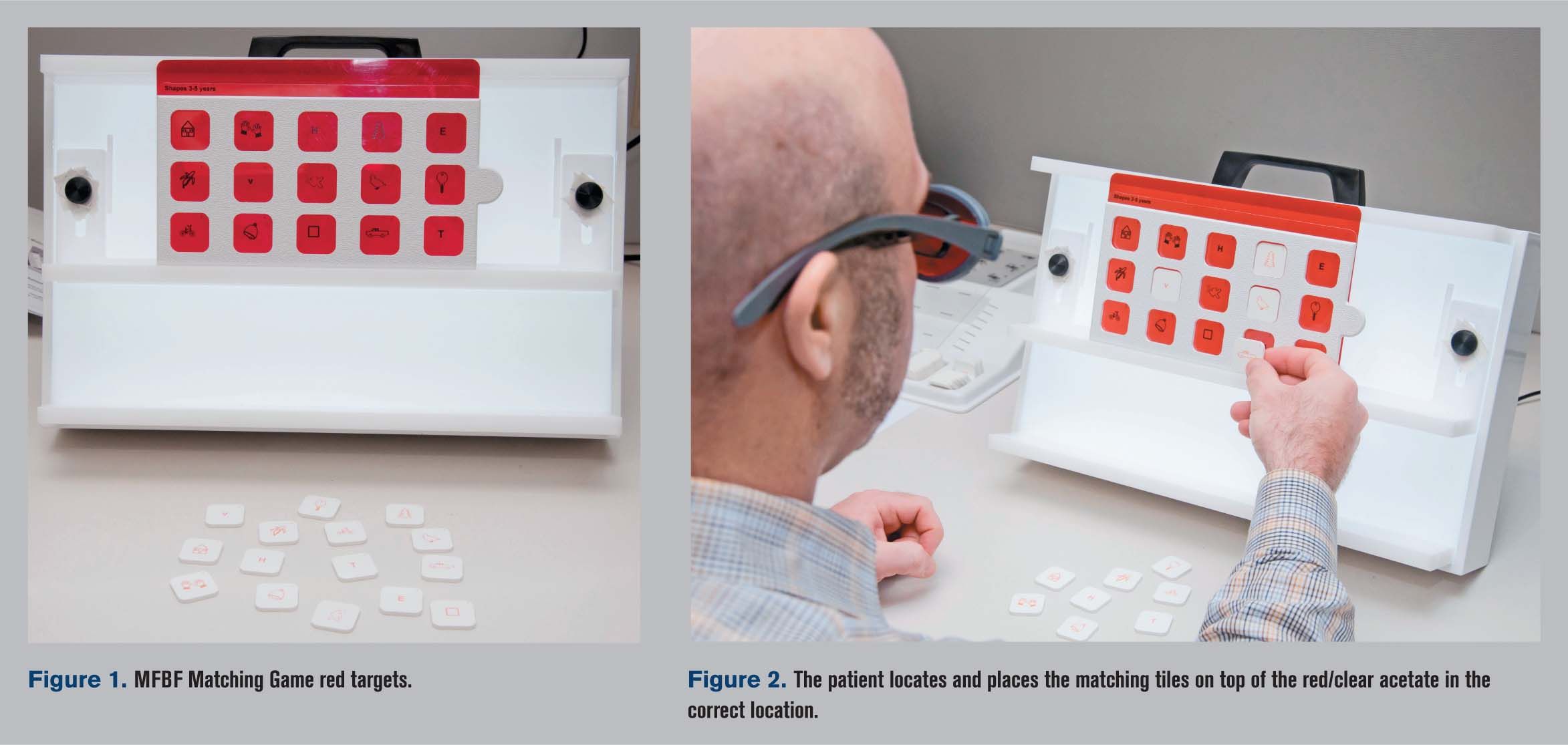
Next: Lens blanks
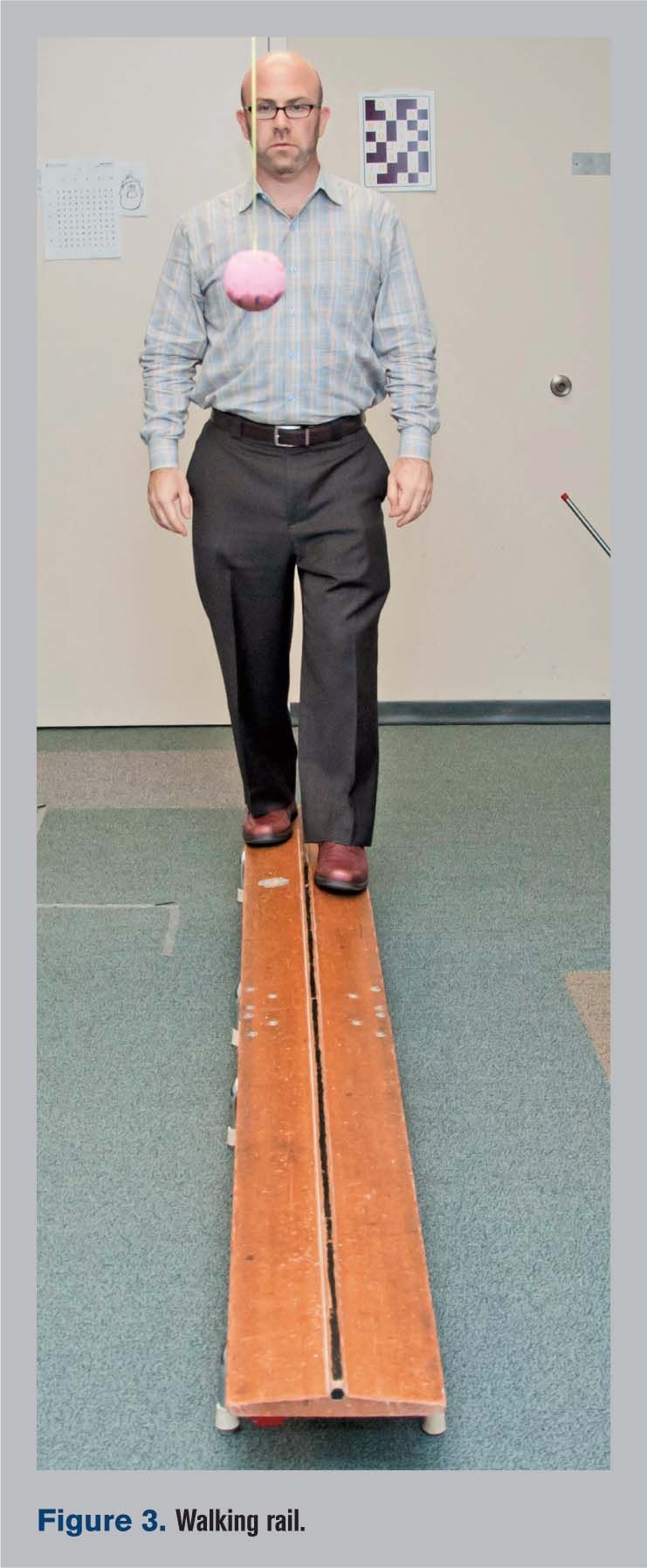
2. Lens blanks
I bet you never thought of using your lens blanks for more than spectacles, but in vision therapy, we put them to good use. In a technique I learned from the Optometric Extension Program’s Curriculum Courses called Mental Minus, the lenses are used to create conscious control in three-dimensional space involving accommodation. Starting with high minus lenses, we use the activity to establish the foundations for the concepts of smaller, larger and closer and farther. SILO (small in, large out) is built off of this activity and is crucial to successful vision therapy. Once the higher powers like -8.00 D/+6.00 is completed successfully, the trick is to obtain a consistent response with lower powers. These lenses are not expensive and can be issued for home-based support. A traditional plastic lens with no coating is recommended.
More from Dr. Taub: Treating patients with brain injuries
3. Walking rail
A walking rail is useful for patients with tracking problems and/or perceptual difficulties. The level of the activity can easily be adjusted up or down to suit the patient’s ability, and kids love showing off to their therapist and parents. Starting with a military-type walk, the addition of a fixation target such as a Marsden ball and a metronome can increase the challenge (Figure 3). Next, make the ball swing side to side and even around the patient as he walks, and the challenge increases. Oh, did I mention that he has to go forward and backward? The walking rail should be performed with shoes off to provide a challenge to balance and increase the tactile feedback in all parts of the foot. I can personally attest that sensory feedback is crucial to proper balance and walking!
Next: Facility Rock Set
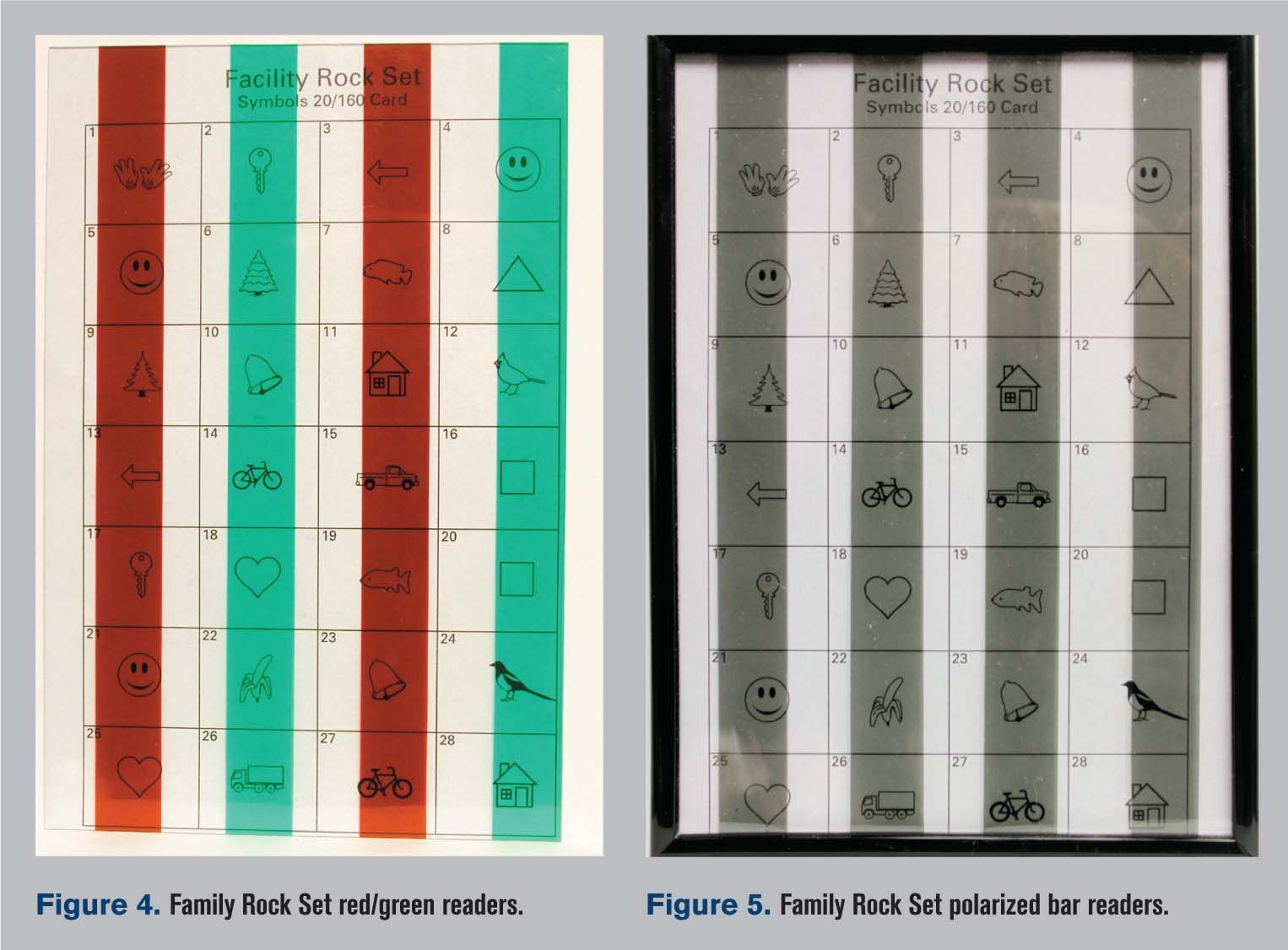
4. Facility Rock Set
Again, while these concepts have been on the market for many years, this is the first set to bring all the pieces of facility testing and therapy, accommodative and vergence, together into one package. Also, this includes a greater variety of targets (pictures, numbers, Landolt Cs, and three grade levels of words), rows of targets designed to match up under red/green (see Figure 4) and polarized bar readers (see Figure 5) and cards made of a durable material.
Related: Vision therapy: Questions to ask
Accommodative and vergence facility are crucial in testing and therapy because they mirror daily activities of looking from distance to near and the opposite. So much of our testing is static and smooth; facility activities are dynamic in nature. The set comes with +/- 2.00 D and 12 base out/3 base in flippers for use in testing or therapy. These are the standard powers used in research studies on these topics. Therapy can be performed either using the included cards or with any appropriate print material.
Next: Vision Builder/Home Therapy Systems
5. Vision Builder/Home Therapy Systems
As I discussed in the first top 10 activities list, computer programs are a great addition to a standard vision therapy program. The two sets of programs I use frequently are Vision Builder and those produced by Home Therapy Systems. Vision Builder is an all-in-one program and can be used in-office and at home. There are vergence, tracking, anti-suppression, and perceptual components to the program. One bonus is that you can generate your own Hart charts with a variety of rows and columns to suit your patients’ abilities.
Home Therapy Systems has multiple programs depending on your patient’s needs. There are programs for both in-office and home-based therapy that focus on accommodation/vergence, amblyopia, and perception. I love the home-based version because the results are sent to a main system, and I can log in to evaluate the patients’ performances and confirm that they are actually doing the work assigned. Because patients can travel from up to several hours away, this program allows for controlled home-based therapy. Even though I push for office-based vision therapy as a first approach, Home Therapy Systems eases my mind in regard to home-based treatment.
Next: Prism flippers/loose lenses
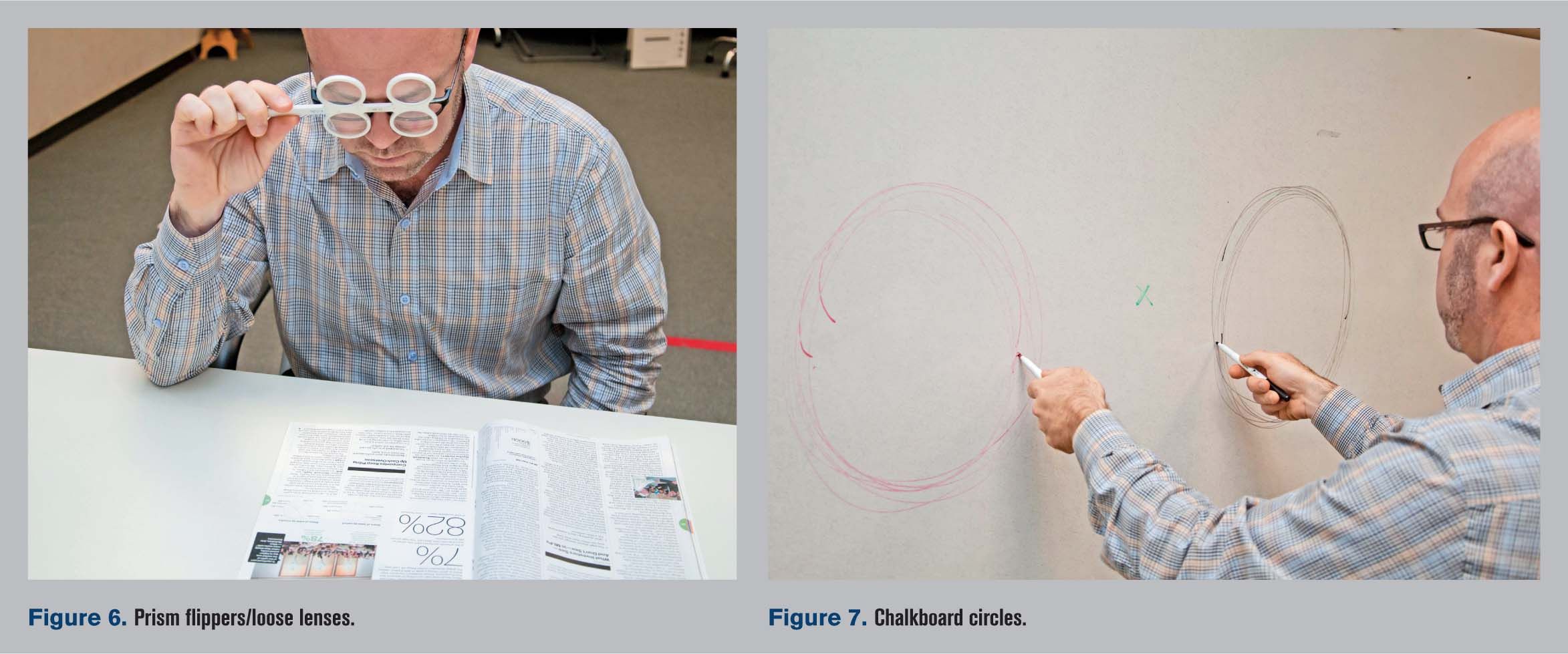
6. Prism flippers/loose lenses
Prism, like lenses, is so important for therapy. For strabismic patients, using loose prism in the opposite direction of the eye turn will allow the patient to feel that eye move (see Figure 6). You can’t expect the patient to eventually control the eye and move it in a way that he cannot feel or understand. The use of loose prism makes that possible.
Prism flippers are used toward the end of therapy and in a fashion similar to accommodative flippers with plus and minus lenses. Starting with low, symmetrical amounts of base out and in, have the patient read for five minutes, flipping every sentence. To increase the difficulty, have him flip every few words or increase the powers of the prism. There is no need to go too high on the prism power-you need to emphasize quality over quantity.
7. Chalk/whiteboard
Even though wall space can be considered a premium in many offices, the chalk or whiteboard is a must have. When it comes to hand-eye coordination activities, having a large, clean surface is key. Some vision therapy doctors prefer the traditional chalkboard for the tactile support of the chalk on the board vs. the smooth sensation of the marker on the whiteboard. Each is useful, and I am spoiled to have both. The whiteboard has the added bonus of being used for anti-suppression activities when using red/green glasses with the same color markers. Chalkboard circles (see Figure 7), racetrack, CP saccades, and flashlight tag are just some of the activities that can be performed with these boards. If you get the chalkboard, make sure to use dustless chalk or the floor, walls, and you will be covered quickly.
Next: Aperature rule
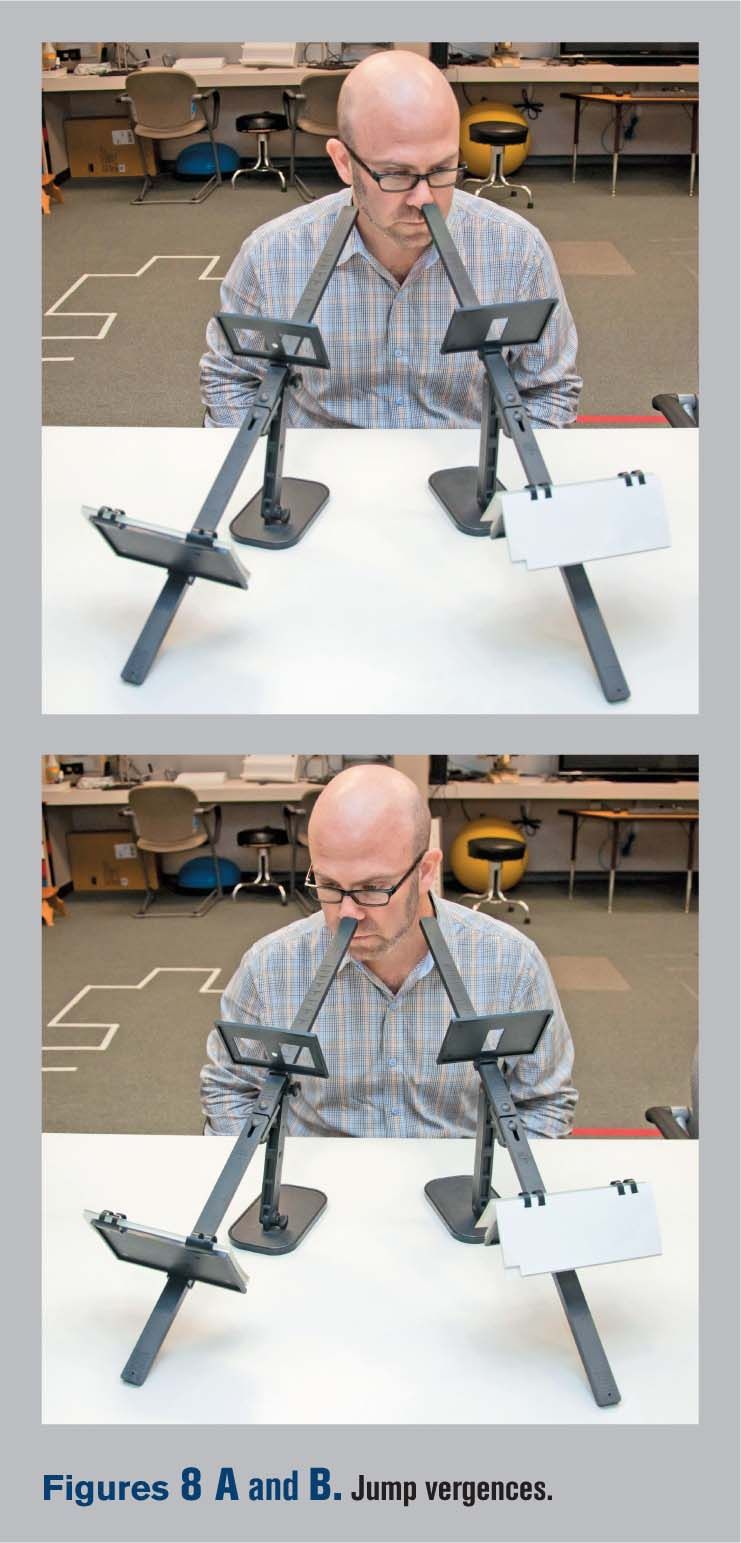
8. Aperture rule
The aperture rule is used toward the end of vision therapy and is used to train both convergence and divergence depending on the set up; one aperture is convergence and two apertures are for divergence. Once you master each side separately, you can use two and do jump vergences (see Figures 8a and 8b). Another option is to use plus and minus flippers to alter the accommodative demand while keeping the vergence demand static. Even though it is a difficult technique for the patient to master, it is super simple for the therapist. There are numbers on each card that instruct the therapist on card and aperture placement. Each target also contains a suppression check to ensure binocularity.
Next: New vectograms
9. New vectograms
Everyone knows the old stalwarts like the quiot, spirangle and clown, but Vision Assessment Corporation manufactures new vectograms that just pop off the page. The chain and gem are simple peripheral targets and should be used earliest (see Figure 10). The vortex is both peripheral and central and contains letters of equal demand along the design (see Figure 11). The bear and popcorn have detailed targets placed over the entire vectogram, and the demand changes based on what or where you are fixating (seeFigure 12). The popcorn is my new personal favorite because the kernels literally pop off the change. I get hungry just thinking about it! When doing vectograms, the quality or the response trumps the quantity of the level patients can achieve. Don’t forget that two vectograms-one base out on the bottom and another base in on the top-can be used as a jump duction. Lenses can also be added; the patient flips between plus and minus lenses, increasing the accommodative demand of the activity.

Next: Dowel/stick
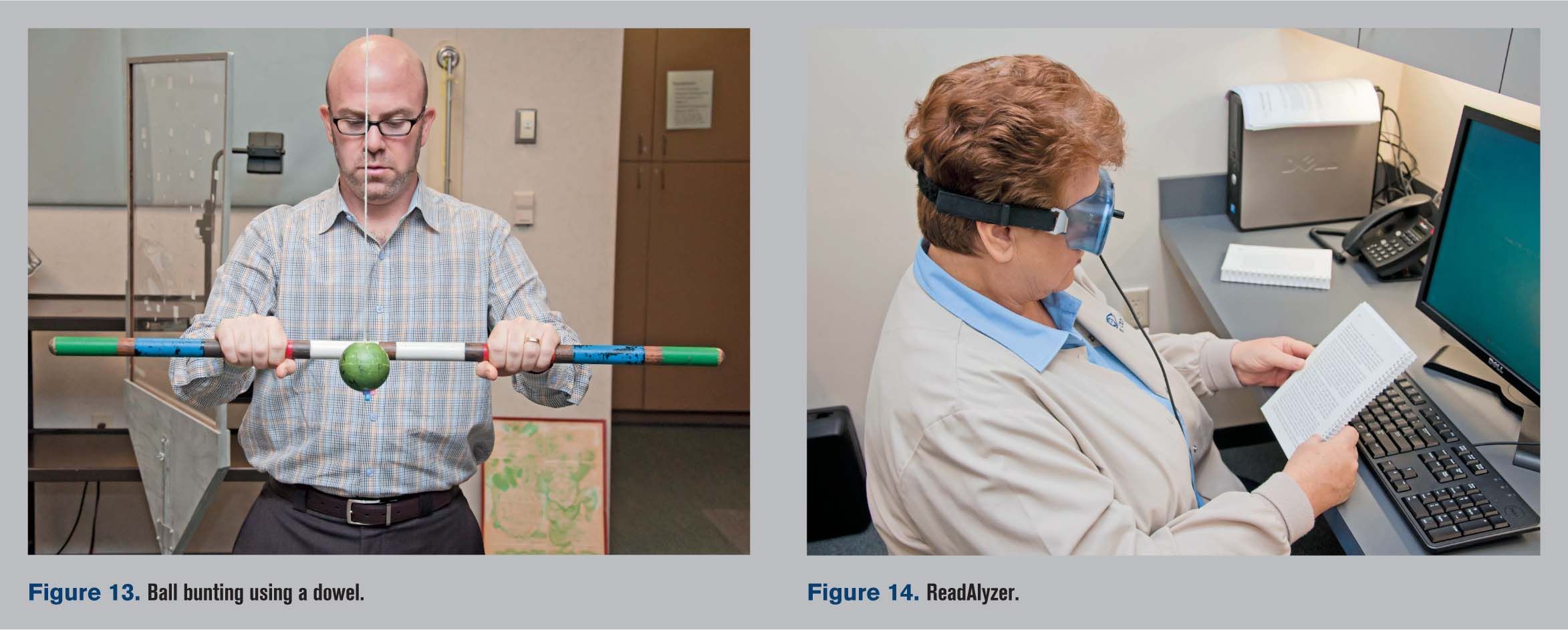
10. Dowel/stick
Yes, a stick! I use the dowel two ways. In ball bunting, I use different colored tape along the dowel (see Figure 13). The patient bunts the ball forward and repeats the process. Using the tape, he can alternate left and right of the central line and even call out left/right. He can move his hands inward and attempt the activity using the outer colors-the further from the center, the more challenging. Memory can be challenged by calling out a pattern; now, he has to perform the eye-hand aspects along with recalling the pattern. The dowel can be used with the CP saccades activity to point to different letters on the board while keeping fixation on a central point. This is great for peripheral awareness.
Bonus item: ReadAlyzer eye movement recording system
The ReadAlyzer is more for testing than for therapy, but I want to espouse its benefits nonetheless. Using infrared goggles, the patient’s eye movements are tracked while reading age-appropriate materials. Passages range from kindergarten to adult levels. They come in both short and long versions. For younger kids, I prefer short passages, but for teens and adults, the longer passages mirror real-life reading (see Figure 14). Some patients appear to have good quality eye movements with short passages but fall apart when asked to read something longer. The passages come in over 14 languages, including Mexican Spanish, Hebrew, Arabic, and Italian. I love showing parents what their children’s eyes are actually doing when reading. It is amazing to see parents’ reactions, and it allows immediate understanding on their parts. This product can be purchased only through the Optometric Extension Program Foundation.
I hope you enjoyed this second list of equipment for vision therapy that I consider must haves. You don’t have to buy them all at once, but I promise they are worth every penny and will make your vision therapy state of the art and a rousing success.
Dr. Taub has financial interested in the MFBF Matching Game and the Facility Rock Set.
Check out Dr. Taub's first list of vision therapy must-haves!
Newsletter
Want more insights like this? Subscribe to Optometry Times and get clinical pearls and practice tips delivered straight to your inbox.